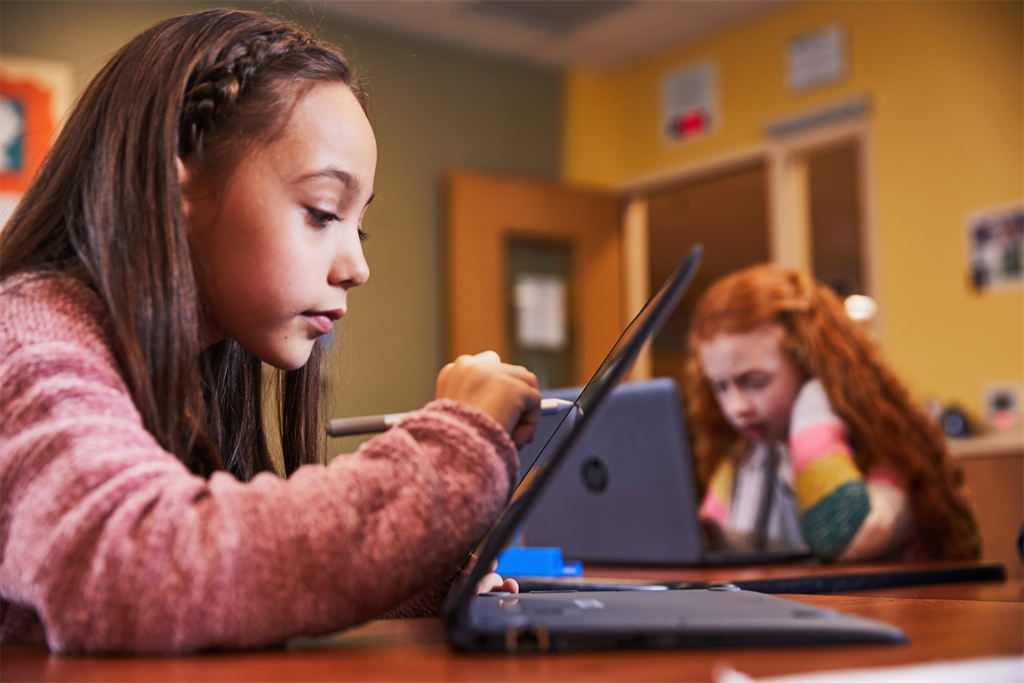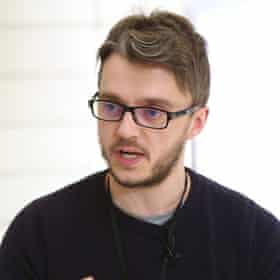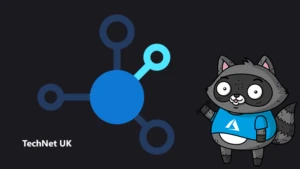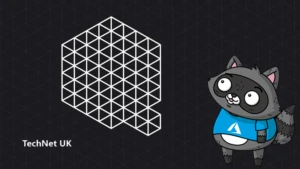
How to use technology effectively in the classroom
There’s no doubt that technology is changing the way we work but how can you use technology to its full potential in the classroom to help your students work smarter and prepare them for the future workplace.
We caught up with some of our Microsoft Innovative Educator Experts to see how they’re using technology to promote innovation in teaching and learning.
“We have the chance to sculpt such a bright future for the next generation.” – Jose Kingsley, UK
 Jose Kingsley grew up dreaming of being a teacher. So it’s no surprise that he’s now tirelessly committed, not only to ensuring successful outcomes for his young students from diverse cultures, but to helping his fellow teachers discover the value of teaching with technology.
Jose Kingsley grew up dreaming of being a teacher. So it’s no surprise that he’s now tirelessly committed, not only to ensuring successful outcomes for his young students from diverse cultures, but to helping his fellow teachers discover the value of teaching with technology.
To fulfil those commitments, Kingsley takes full advantage of the resources and opportunities that come with being a MIEE – from participating in the Microsoft E2 Educator Exchange (E2) in Budapest, to being an active member of the Microsoft Educator Community (MEC).
“I believe that Microsoft allows us as MIEE’s to work through challenges we face, making it personalised, Kingsley says. “[Attending E2] was almost like being back in school myself. It was on returning to school the week after and drawing up an action plan that I realised just how much I had taken away. I felt like I had enough to write a whole new curriculum, I kid you not.”
That new curriculum had a lot to do with putting the power of learning in the hands of his students – an approach Kingsley brings to life using programs like Skype in the Classroom (Kingsley started the #SkypeMeet series) and Sway.
“Giving children ownership of their learning empowers meaningful learning,” he says. “Using the Microsoft Educator Community as MIEE’s we have the opportunity to create a continuing professional development (CPD) programme that entirely suits the learner’s need. I adopted this attitude within my classroom, giving children the power to make decisions about what they wanted to learn. The motivation and confidence of my children have increased massively and they feel prepared to take risks and learn from mistakes.”
Kingsley’s passion for teaching is palpable, especially when he reflects on his students’ future.
“I teach five to six-year-old children,” he tells us, “and it is makes me immensely proud to see their excitement about using technology within their everyday learning. They often enjoy telling me that if they presented their learning using Office 365, the outcome would be enhanced. Always in the back of my mind is that question: What impact will this have on their future? This is a question that I cannot answer, but I can prepare them for.”
Read the full interview here.
“OneNote has enabled us to work with different people, different cultures, and just collaborate and share with students what’s going on outside the classroom.” – Lee Whitmarsh, UK
 For art educator and new Microsoft Innovative Educator Expert (#MIEExpert) Lee Whitmarsh, technology is a means to an important end: helping his students experience art as fully as possible, and in a global context.
For art educator and new Microsoft Innovative Educator Expert (#MIEExpert) Lee Whitmarsh, technology is a means to an important end: helping his students experience art as fully as possible, and in a global context.
I was excited to chat with Whitmarsh at the recent E2 event, after I’d looked at his project using OneNote to support creative collaboration. (Here’s a great Office Mix detailing the project, “Creating a photography A-level teaching and learning hub.”)
“OneNote,” he says, “has enabled us to work with different people, different cultures, and just collaborate and share with students what’s going on outside the classroom.”
But how does it work in the realm of art education?
“Through photography – it’s such a visual medium, that students are getting to see visual literacy from different areas and [it changes] how all the students see their environment. They’re able to take [what they’ve seen] on board, and then apply it to what they’re doing in their environment.”
And it’s all happening inside OneNote.
“We first set it up and thought about not what the technology can do, but what it needs to do for the students,” Whitmarsh says.
When it came to setting up the collaboration space, his students were thinking big.
“The students – innocently – said, ‘Why do we have to [only] collaborate with each other? Why can’t we go wider?’” says Whitmarsh. “So we just tried it, and we have a wonderful IT department that found a way to actually get students in Seattle (Lynnwood high school) within our OneNote. We do cross-collaboration links, we do peer review, self-review, and we’re going to set up a Skype session to put names with faces.”
Whitmarsh wasn’t at E2 just to share his project, he was also focused on collecting new ideas, some that he might share on his blog.
“It’s been beyond what I thought it would be,” he told me. “It’s been inspirational. To see all the educators from across the world so passionate, so open to ideas, and talking to you about what they’re doing – sharing and listening. It’s just been revolutionary.”
Here’s to revolution, and to teachers like Lee Whitmarsh who are leading the way.
Enjoy the full interview here.
Computational thinking takes hold – even in the youngest of students – Henry Penfold, UK
 Kodu, Minecraft and Skype-a-thons: just three of the many ways that MIEE Henry Penfold uses technology with his primary school students. Penfold is an enthusiastic proponent of these technologies in his classroom, and he’s not shy about sharing why.
Kodu, Minecraft and Skype-a-thons: just three of the many ways that MIEE Henry Penfold uses technology with his primary school students. Penfold is an enthusiastic proponent of these technologies in his classroom, and he’s not shy about sharing why.
“Their growth mindset and their attitude towards it is fantastic,” he says. “With Kodu particularly, they go, ‘right, I’m going to solve this,’ because it’s quite manageable. With the blocks, they can drag and really see it visually.”
Penfold is passionate about getting students involved in computer science, and he has seen some big changes after just a few short years of bringing ICT into his classroom.
“Computing is so important in society,” he says. “Children have their tablets at home, so they are constantly revolved around computers. Digital literacy is so important for giving them the tools for later on when they’re learning, and later on in life. It’s amazing how much they use that technology. I see, particularly, the practical side.”
And with the computer science now mandated as part of the UK curriculum, Penfold has also noticed a difference in how his students speak on a daily basis. “I hear, ‘Right, I’ve just done some de-bugging … I’m going to tinker with this to make it better.’ It’s almost become its own language,” he notes.
As veterans of the recent Skype-a-thon – which was a huge hit in his classroom – trying new technologies is now de rigueur in Penfold’s classroom.
“My children absolutely love being able to talk with other people,” he says. And while their Skype was also in the UK, that didn’t matter. “Just the differences between what Southampton was like and what Wales was like … it’s like a field trip for children that don’t get out as much.”
Next up? “We are hopefully going to Skype someone from Pixar,” says Penfold. “[Skype] makes that thousand miles seem like no distance at all.”
Watch the full interview here.
Turning the tables on technology training in Scotland – Natalie Lochhead, Scotland
 It’s not unusual for teachers to train other teachers to leverage – and make the most of – technology. In fact, we know it’s one of the most effective ways to scale knowledge. But Natalie Lochhead has taken the concept to the next level by using the expertise of her young students (primary 4-7) to turn that tradition on its head.
It’s not unusual for teachers to train other teachers to leverage – and make the most of – technology. In fact, we know it’s one of the most effective ways to scale knowledge. But Natalie Lochhead has taken the concept to the next level by using the expertise of her young students (primary 4-7) to turn that tradition on its head.
As part of the Digital Leaders programme , a wide network of schools throughout the UK that train teachers and students in ICT, Lochhead’s students teach full-class lessons to fellow students, and support teachers as they work to adopt 1 to 1 approaches in the classroom. All of this is made possible by Glow, Scotland’s national digital learning environment.
“My proudest moment in my career has been watching my digital leaders grow into amazing, confident and skilled young people,” Lochhead tells us. “I know that no matter that they do when they leave school, they will have success.” She goes on to say: “[I love] watching them training their teachers, connecting online with other educators via Glow and generally being awesome. They have made such an impact on our school becoming genuine leaders in technology. I am so proud of every one of them.”
Lochhead’s Digital Leaders are trained each Wednesday at lunch time, and then train other classes and teachers on that particular skill. To date, they’ve taught Windows 365, the basics of using a tablet and Kodu. They’ve participated in Scotland’s Kodu Cup and Hour of Code, and have even been featured in the Chamber of Commerce Business Matters Magazine. To keep track of all their activities, Lochhead maintains a class blog.
This impressive educator’s students aren’t the only ones transferring technology knowledge. As a MIEE, Lochhead shares her approach through the MEC and participates in events like last December’s meeting of UK Showcase Schools and MIEEs. She also publishes helpful tutorials, like this one on creating animations in the classroom.
Natalie Lochhead isn’t the first teacher to recognize students’ capacity to teach, but in building a formal program to support this potential, she’s making a big difference.
Microsoft Innovative Educator Expert (MIEE) is an exclusive programme created to recognise global teacher visionaries who are paving the way for their peers in the effective use of technology for better learning and student outcomes.




